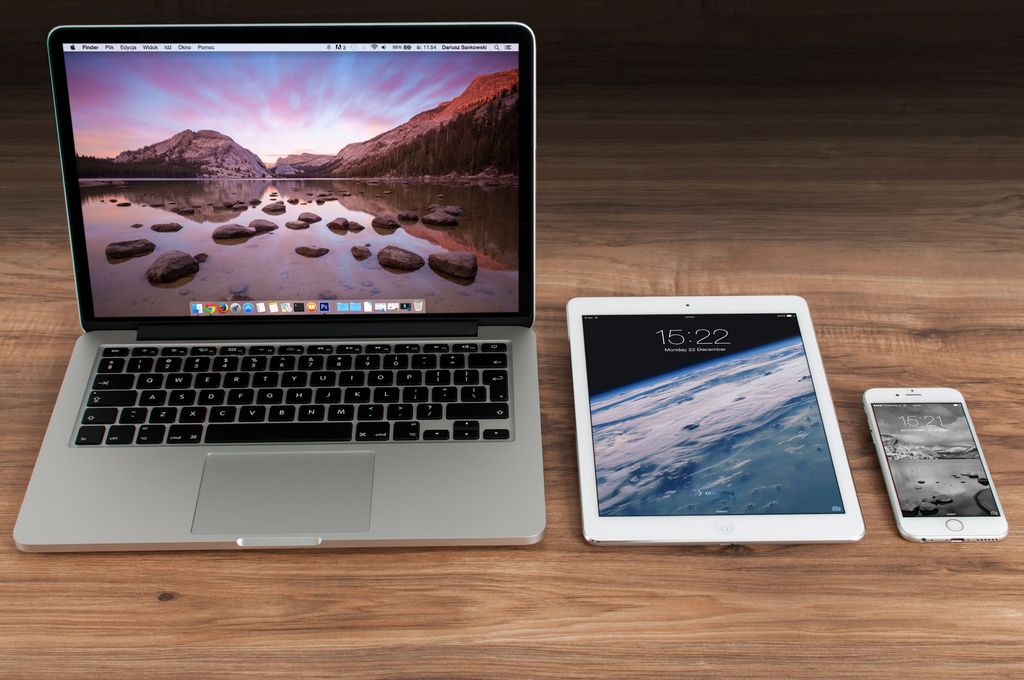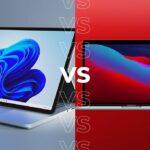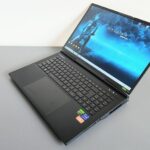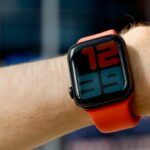The iPad and laptop are two popular computing devices that offer different advantages and disadvantages. In this article, we will compare the pros and cons of each device to help you make an informed decision. From design and portability to functionality and performance, user interface and input methods, software and applications, connectivity and accessories, battery life and power management, and price and value for money, we will explore the key differences between the iPad and laptop. Here are the key takeaways:
Key Takeaways
- The iPad offers a sleek and lightweight design, making it highly portable.
- Laptops provide versatility and power, with a wide range of form factors to choose from.
- The iPad’s simplicity and efficiency make it ideal for casual users and media consumption.
- Laptops offer a keyboard and trackpad for easy typing and navigation.
- The iPad’s app-centric ecosystem and touchscreen interface enhance user experience.
The Evolution of Computing Devices

From Desktops to Laptops
The evolution of computing devices has come a long way, transitioning from bulky desktop computers to the more portable and versatile laptops. Laptops have revolutionized the way we work, allowing us to carry our computing power wherever we go. With advancements in technology, laptops have become more compact and lightweight, making them a popular choice for professionals, students, and casual users alike. The convenience of having a portable device that can handle complex tasks has made laptops an essential tool in today’s digital age.
The Rise of Tablets
With the increasing popularity of mobile devices, tablets have emerged as a new category of computing devices. Tablets offer a unique combination of portability and functionality, making them a popular choice for both work and entertainment. Tablets have become an integral part of our daily lives, allowing us to stay connected, productive, and entertained on the go.
Tablets have revolutionized the way we consume media, with their sleek and lightweight design and intuitive touch interface. They provide a more immersive and interactive experience compared to traditional laptops. Whether it’s watching movies, reading books, or playing games, tablets offer a convenient and enjoyable way to engage with digital content.
In addition to their entertainment value, tablets have also found their place in the professional world. Many professionals use tablets for tasks such as note-taking, presentations, and accessing important documents on the go. The simplicity and efficiency of the iPad’s user interface, combined with the versatility of apps, make it a valuable tool for productivity.
Tablets have also made a significant impact in the education sector. With their portable nature and interactive capabilities, tablets have transformed the way students learn and engage with educational content. They provide access to a wide range of educational apps and resources, enabling personalized and interactive learning experiences.
While tablets offer many advantages, it’s important to consider their limitations as well. Tablets are primarily designed for consumption rather than creation. They may not have the processing power and multitasking capabilities of laptops, making them less suitable for resource-intensive tasks such as video editing or software development. Additionally, the lack of a physical keyboard and limited connectivity options may pose challenges for certain professional use cases.
In conclusion, the rise of tablets has brought about a new era of computing devices that offer a unique combination of portability, functionality, and entertainment. Tablets have become an integral part of our daily lives, providing us with convenient access to information, entertainment, and productivity tools. While they may not replace laptops entirely, tablets have carved out their own niche in the tech world and continue to evolve and innovate.
The Emergence of the iPad
The emergence of the iPad marked a significant shift in the computing landscape. With its sleek and lightweight design, the iPad introduced a new form factor that appealed to users looking for portability and convenience. The iPad’s touchscreen interface and Apple Pencil support revolutionized the way users interacted with their devices, making it more intuitive and natural. While laptops offered versatility and power, the iPad focused on simplicity and efficiency, catering to users who prioritized ease of use and seamless integration with the Apple ecosystem.
Design and Portability

Laptop: Power and Bulk
When it comes to power and bulk, laptops are known for their high-performance capabilities and robust hardware. With powerful processors, dedicated graphics cards, and ample storage space, laptops are designed to handle demanding tasks such as video editing, gaming, and software development. However, this power comes at a cost – laptops are generally larger and heavier compared to other computing devices.
Pros of Laptop Power and Bulk:
- High-performance capabilities
- Robust hardware for demanding tasks
- Ample storage space
Cons of Laptop Power and Bulk:
- Larger and heavier form factor
- Less portable compared to other devices
While laptops may not be the most lightweight or compact option, their power and versatility make them a popular choice for professionals and power users who require a portable workstation that can handle resource-intensive tasks.
iPad: Sleek and Lightweight
The iPad is known for its sleek and lightweight design, making it highly portable and easy to carry around. With its slim profile and minimal weight, the iPad is perfect for users who are always on the go. Whether you’re traveling, commuting, or simply moving from room to room, the iPad’s compact form factor allows for effortless mobility.
In addition to its portability, the iPad’s sleek design also adds to its aesthetic appeal. The device features a clean and modern look, with a slim bezel and a smooth, seamless finish. Its sleek appearance not only enhances its visual appeal but also contributes to its overall user experience.
While the iPad’s sleek and lightweight design offers numerous advantages, it’s important to note that it may come with some trade-offs. The slim profile of the device may limit the availability of certain ports and connectors, and the lightweight construction may make it more susceptible to damage if not handled with care. However, with proper usage and care, the iPad’s sleek and lightweight design can be a major advantage for users seeking a portable and stylish computing device.
Comparing Form Factors
When it comes to comparing the form factors of laptops and iPads, there are a few key differences to consider. Laptops are known for their power and bulk, offering a wide range of processing capabilities and storage options. On the other hand, iPads are sleek and lightweight, making them highly portable and easy to carry around.
In terms of design, laptops typically feature a traditional clamshell design with a keyboard and trackpad, providing a familiar and efficient input method. iPads, on the other hand, have a touchscreen interface and support for the Apple Pencil, allowing for more intuitive and creative interactions.
While laptops offer a wider range of connectivity options with multiple ports and expandability, iPads rely on wireless connectivity and accessories such as Bluetooth keyboards and styluses. This allows for a more streamlined and clutter-free experience.
Overall, the choice between a laptop and an iPad depends on your specific needs and preferences. If you require more power and versatility, a laptop may be the better option. However, if portability and simplicity are your priorities, an iPad can provide a sleek and efficient solution.
Functionality and Performance

Laptop: Versatility and Power
Laptops are known for their versatility and power, making them a popular choice for professionals and students alike. With a laptop, you have the ability to perform a wide range of tasks, from word processing and spreadsheet management to graphic design and video editing. The powerful processors and ample storage capacity of laptops allow for smooth multitasking and efficient performance. Additionally, laptops offer the convenience of portability, allowing you to work or study from anywhere. Whether you’re in a coffee shop, library, or on a plane, a laptop provides the flexibility to stay productive on the go.
iPad: Simplicity and Efficiency
The iPad is known for its simplicity and efficiency. With its intuitive touchscreen interface, users can easily navigate through apps and perform tasks with just a few taps. The iPad’s operating system, iPadOS, is specifically designed to optimize the tablet’s performance and enhance user experience. It offers a streamlined and user-friendly interface, making it accessible to both tech-savvy individuals and those who are new to technology.
One of the key advantages of the iPad’s simplicity is its ease of use. The device is highly intuitive, allowing users to quickly learn and navigate through its features. Whether it’s browsing the web, checking emails, or using productivity apps, the iPad offers a seamless and straightforward experience.
In terms of efficiency, the iPad excels in its ability to perform tasks quickly and smoothly. The device is powered by Apple’s custom-designed chips, which are known for their high performance and energy efficiency. This allows the iPad to handle demanding tasks such as multitasking, video editing, and gaming with ease, while still maintaining a long battery life.
The iPad also offers a wide range of productivity features that enhance efficiency. With features like Split View and Slide Over, users can easily multitask and work on multiple apps simultaneously. The iPad also supports the use of the Apple Pencil, which provides a precise and natural way to take notes, draw, and annotate documents.
Overall, the iPad’s simplicity and efficiency make it a versatile device that is suitable for a wide range of users, from students and professionals to casual users who simply want to browse the web and consume media.
Processing Power and Multitasking
When it comes to processing power and multitasking, laptops have the upper hand. With their powerful processors and ample RAM, laptops can handle resource-intensive tasks and run multiple applications simultaneously without any lag. This makes them ideal for demanding tasks such as video editing, graphic design, and gaming. On the other hand, the iPad is designed for simplicity and efficiency. Its A-series chips are optimized for mobile use and provide smooth performance for everyday tasks like web browsing, email, and media consumption. While the iPad can handle multitasking to some extent, it may struggle with more demanding applications and heavy multitasking scenarios.
User Interface and Input Methods

Laptop: Keyboard and Trackpad
The keyboard and trackpad are two essential input methods on laptops that greatly contribute to the overall user experience. The keyboard allows for fast and accurate typing, making it ideal for tasks that require a lot of text input, such as writing documents or coding. Additionally, most laptops have a trackpad that serves as a mouse replacement, allowing users to navigate the screen and interact with applications. The trackpad offers precise cursor control and supports gestures for multitasking and navigating through windows. Together, the keyboard and trackpad provide a versatile and efficient input system for laptop users.
iPad: Touchscreen and Apple Pencil
The iPad’s touchscreen and Apple Pencil offer a unique and intuitive user experience. With the touchscreen, users can directly interact with the device by tapping, swiping, and pinching to zoom. This makes navigation and control of apps and content more natural and effortless. Additionally, the Apple Pencil provides a precise and responsive input method for tasks that require more precision, such as drawing, note-taking, and graphic design. The combination of the touchscreen and Apple Pencil opens up a whole new world of creativity and productivity for users.
Adapting to Different Input Methods
When it comes to input methods, the laptop and iPad offer distinct options that cater to different user preferences. The laptop provides a traditional keyboard and trackpad, which many users are familiar with and find comfortable for typing and navigating. The tactile feedback and precision of a physical keyboard can be advantageous for tasks that require extensive typing, such as writing documents or coding.
On the other hand, the iPad offers a touchscreen interface and supports the use of the Apple Pencil. This combination allows for a more intuitive and direct interaction with the device, especially for tasks that involve drawing, sketching, or annotating. The Apple Pencil provides a natural writing and drawing experience, making it a popular choice among artists, designers, and note-takers.
Table: Laptop vs iPad Input Methods
| Input Method | Laptop | iPad |
|---|---|---|
| Keyboard | Physical keyboard | On-screen keyboard |
| Trackpad | Built-in trackpad | N/A |
| Touchscreen | N/A | Capacitive touchscreen |
| Stylus Support | N/A | Apple Pencil support |
- The laptop offers a physical keyboard and trackpad, providing a familiar and efficient input method for typing and navigating.
- The iPad features a touchscreen interface and supports the use of the Apple Pencil, offering a more intuitive and versatile input method for drawing and annotating.
- Users should consider their specific needs and preferences when choosing between the laptop and iPad, as the input method can significantly impact the overall user experience.
Tip: If you frequently switch between devices with different input methods, consider using a wireless keyboard or a stylus that is compatible with multiple devices for a seamless transition.
Software and Applications

Laptop: Wide Range of Software
Laptops offer a wide range of software options, making them versatile tools for various tasks. From productivity suites like Microsoft Office to creative software like Adobe Creative Cloud, there is software available for every need. Whether you’re a student, professional, or casual user, you can find software that suits your requirements. Additionally, the open nature of the laptop ecosystem allows for the installation of third-party software, expanding the possibilities even further.
iPad: App-Centric Ecosystem
The iPad offers users an app-centric ecosystem, providing a wide range of applications designed specifically for the device. With the App Store, users can easily discover and download apps for various purposes, such as productivity, creativity, entertainment, and more. The app-centric nature of the iPad allows users to customize their device according to their needs and preferences, enhancing their overall experience. Whether it’s editing photos, creating music, or playing games, there is an app available for almost every task. Additionally, developers continue to innovate and create new apps, expanding the possibilities of what the iPad can do.
Compatibility and Productivity
When it comes to compatibility and productivity, laptops have a clear advantage over iPads. Laptops are designed to run a wide range of software, making them compatible with various applications and programs. This versatility allows users to perform complex tasks and work with specialized software, such as graphic design or video editing tools. Additionally, laptops offer a more traditional input method with a physical keyboard and trackpad, which can enhance productivity for tasks that require extensive typing or precise cursor control. On the other hand, iPads have a more app-centric ecosystem, with a focus on simplicity and ease of use. While this can be advantageous for casual users and those who prefer a streamlined experience, it may limit the availability of certain software and features. The touchscreen interface and compatibility with the Apple Pencil also offer unique opportunities for creativity and note-taking. Ultimately, the choice between a laptop and an iPad depends on the specific needs and preferences of the user.
Connectivity and Accessories

Laptop: Ports and Expandability
Laptops are known for their versatility and ability to connect to a wide range of devices and peripherals. With multiple USB ports, HDMI ports, and SD card slots, laptops offer the flexibility to connect external monitors, printers, storage devices, and more. Additionally, laptops often have expansion slots that allow users to upgrade components such as RAM and storage for improved performance. This expandability makes laptops a popular choice for professionals and power users who require a high level of customization and connectivity.
iPad: Wireless Connectivity and Accessories
The iPad offers seamless wireless connectivity, allowing users to stay connected wherever they go. With built-in Wi-Fi and optional cellular capabilities, users can access the internet, stream content, and download apps without the need for a physical connection. Additionally, the iPad supports Bluetooth technology, enabling users to connect wireless accessories such as keyboards, mice, and headphones for a more versatile and personalized experience.
In terms of accessories, the iPad offers a wide range of options to enhance productivity and creativity. The Apple Pencil, for example, provides a precise and natural way to take notes, draw, and annotate documents. The Smart Keyboard Folio offers a convenient typing experience, turning the iPad into a compact and portable workstation. Other accessories like the Magic Keyboard and the AirPods further expand the capabilities of the iPad, making it a powerful tool for work, entertainment, and creativity.
Wireless Connectivity and Accessories
- Seamless wireless connectivity with built-in Wi-Fi and optional cellular capabilities
- Support for Bluetooth technology for connecting wireless accessories
- Apple Pencil for precise note-taking and drawing
- Smart Keyboard Folio for a convenient typing experience
- Magic Keyboard and AirPods for enhanced productivity and entertainment
Note: The availability of accessories may vary depending on the iPad model.
Adapting to Different Connectivity Options
When it comes to connectivity options, the iPad takes a wireless approach, offering seamless integration with other Apple devices and accessories. With features like Wi-Fi and Bluetooth, the iPad allows users to connect to the internet and other devices without the need for physical ports. Additionally, the iPad supports a wide range of wireless accessories, such as Apple Pencil and AirPods, enhancing the user experience and productivity. This wireless ecosystem provides flexibility and convenience, allowing users to adapt to different connectivity scenarios.
On the other hand, laptops offer a variety of connectivity options, including USB ports, HDMI ports, and Ethernet ports. These physical connections allow users to easily connect to external devices, such as monitors, printers, and wired networks. Laptops also offer the option to connect wirelessly through Wi-Fi and Bluetooth, providing a balance between wired and wireless connectivity.
In summary, the iPad’s wireless connectivity and compatibility with Apple accessories make it a convenient choice for users who prefer a streamlined and cable-free experience. Laptops, on the other hand, offer a wider range of connectivity options, making them suitable for users who require more flexibility and the ability to connect to various external devices.
Battery Life and Power Management

Laptop: Longer Battery Life
One of the key advantages of laptops over iPads is their longer battery life. Laptops are designed to provide extended usage without the need for frequent recharging. This is especially beneficial for users who are constantly on the go or need to work for long hours without access to a power source. With advancements in battery technology, many laptops now offer battery life that can last up to 10 hours or more, depending on the model and usage. This allows users to be more productive and efficient without the worry of running out of power.
In contrast, while iPads also have decent battery life, they generally cannot match the longevity of laptops. The compact size and slim design of iPads limit the space available for a larger battery. As a result, iPads typically have a battery life of around 8 to 10 hours, which may be sufficient for most daily tasks but may require more frequent charging for heavy usage or extended periods of work. It’s important for users to consider their specific needs and usage patterns when deciding between a laptop and an iPad, taking into account the trade-off between portability and battery life.
In summary, laptops offer the advantage of longer battery life compared to iPads, allowing users to work for extended periods without the need for frequent recharging. However, iPads still provide a decent battery life that is suitable for most daily tasks. Ultimately, the choice between a laptop and an iPad depends on individual preferences and requirements.
iPad: Efficient Power Management
The iPad is known for its efficient power management, allowing users to enjoy longer battery life. With its optimized hardware and software integration, the iPad is designed to maximize battery performance. The A-series chips used in iPads are specifically designed to be power-efficient, providing a balance between performance and battery consumption. Additionally, the iPad’s operating system, iPadOS, includes power-saving features such as Low Power Mode, which reduces background activity and adjusts display brightness to conserve battery. This efficient power management ensures that users can use their iPads for extended periods without worrying about running out of battery.
Balancing Performance and Battery Life
When it comes to choosing between an iPad and a laptop, one important consideration is the balance between performance and battery life. Laptops are known for their powerful processors and multitasking capabilities, which make them ideal for resource-intensive tasks like video editing or gaming. However, this power comes at the cost of battery life, as laptops typically require more energy to run.
On the other hand, iPads are designed to be efficient and power-friendly. With their optimized operating system and energy-efficient processors, iPads can provide a longer battery life compared to laptops. This makes them a great choice for users who prioritize portability and all-day usage.
It’s important to note that the performance of an iPad may not match that of a high-end laptop, especially when it comes to demanding tasks. However, for everyday tasks like web browsing, email, and document editing, the iPad’s performance is more than sufficient.
In summary, if you need a device with high performance and don’t mind sacrificing battery life, a laptop may be the better choice. But if you value portability and long-lasting battery life, an iPad is a great option to consider.
Price and Value for Money

Laptop: Wide Range of Price Points
When it comes to laptops, one of the key advantages is the wide range of price points available. Whether you’re on a tight budget or looking for a high-end device, there’s a laptop that suits your needs. Affordable laptops offer basic functionality and are perfect for everyday tasks such as web browsing, word processing, and multimedia consumption. On the other end of the spectrum, premium laptops provide top-of-the-line features and performance for demanding tasks like video editing, gaming, and graphic design.
In addition to the price range, laptops also come in various sizes, designs, and specifications. Some laptops are ultra-portable and lightweight, making them ideal for frequent travelers or students who need to carry their device around campus. Others are powerhouses with larger screens and powerful processors, catering to professionals and gamers who require maximum performance.
To help you make an informed decision, here’s a comparison table showcasing different laptop price ranges and their corresponding features:
| Price Range | Features |
|---|---|
| Affordable | Basic functionality, entry-level specs |
| Mid-range | Balanced performance, decent specs |
| High-end | Top-of-the-line features, powerful specs |
Keep in mind that the price of a laptop is influenced by factors such as brand reputation, build quality, and additional features like touchscreen capability or dedicated graphics cards. It’s important to consider your specific needs and budget when choosing a laptop that offers the best value for your money.
iPad: Premium Pricing
The iPad is known for its premium pricing compared to other tablets in the market. This is due to several factors. Firstly, Apple’s reputation for high-quality and innovative products contributes to the premium price tag. Secondly, the iPad offers a seamless integration with the Apple ecosystem, allowing users to easily sync their devices and access a wide range of exclusive apps and services. Additionally, the iPad’s sleek design and premium materials add to its overall appeal. While the higher price may deter some budget-conscious consumers, those who prioritize quality, performance, and the Apple experience are willing to invest in the iPad.
Considering Long-Term Value
When it comes to considering long-term value, both the iPad and laptop have their advantages and drawbacks. Durability is an important factor to consider, as laptops are generally built to withstand more wear and tear compared to iPads. Additionally, laptops offer upgradability, allowing users to replace or upgrade components as needed, which can extend the lifespan of the device. On the other hand, iPads are known for their resale value, as they tend to retain their value well over time. This can be beneficial if you plan on selling or trading in your device in the future.
In terms of software support, laptops often have a longer lifespan in terms of receiving software updates and security patches. This is because laptops typically run on full-fledged operating systems like Windows or macOS, which have longer support cycles compared to the iOS operating system used by iPads. However, iPads have a more streamlined and optimized software experience, which can result in better performance and efficiency.
When it comes to versatility, laptops have the upper hand. They offer a wider range of software options and are better suited for tasks that require heavy multitasking, such as video editing or programming. iPads, on the other hand, excel in portability and are ideal for tasks like web browsing, media consumption, and light productivity. It ultimately depends on your specific needs and usage patterns.
In conclusion, both the iPad and laptop have their own strengths and weaknesses when it comes to long-term value. Consider factors like durability, upgradability, resale value, software support, versatility, and portability to make an informed decision that aligns with your needs and preferences.
Conclusion
In conclusion, the iPad and laptop both have their own set of pros and cons. The iPad offers portability, a user-friendly interface, and a wide range of apps, while the laptop provides a more powerful performance, a physical keyboard, and a larger storage capacity. Ultimately, the choice between the two depends on the individual’s needs and preferences. Whether you prioritize mobility or functionality, it’s important to consider your specific requirements before making a decision. Both devices have their merits and can greatly enhance your productivity and entertainment experience.
Frequently Asked Questions
What is the main difference between an iPad and a laptop?
The main difference between an iPad and a laptop is the operating system. iPads use iOS, which is a mobile operating system, while laptops use operating systems like Windows or macOS.
Can an iPad replace a laptop for all tasks?
While iPads have become more powerful and versatile over the years, they may not be able to replace a laptop for all tasks. Laptops still offer more advanced software and hardware capabilities.
Which device is better for gaming, an iPad or a laptop?
Laptops are generally better for gaming as they have more powerful processors and dedicated graphics cards. However, iPads have a growing collection of high-quality games available in the App Store.
Do iPads have USB ports like laptops?
No, iPads do not have USB ports like laptops. However, there are adapters and accessories available that allow you to connect USB devices to an iPad.
Can I use a keyboard and mouse with an iPad?
Yes, you can use a keyboard and mouse with an iPad. Bluetooth keyboards and mice are compatible with iPads, and some iPads also support USB connections for keyboards and mice.
Which device is more suitable for creative work, an iPad or a laptop?
Both iPads and laptops can be suitable for creative work, but it depends on the specific needs and preferences of the user. iPads offer a touch screen and support for the Apple Pencil, which can be beneficial for certain creative tasks.




